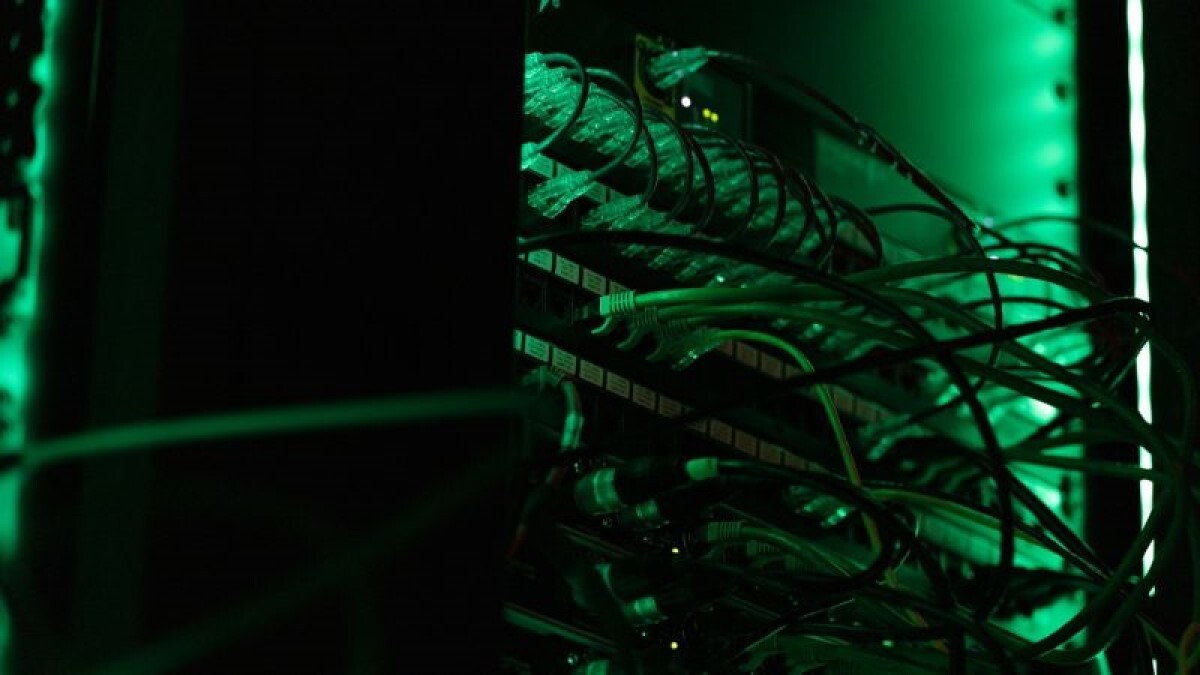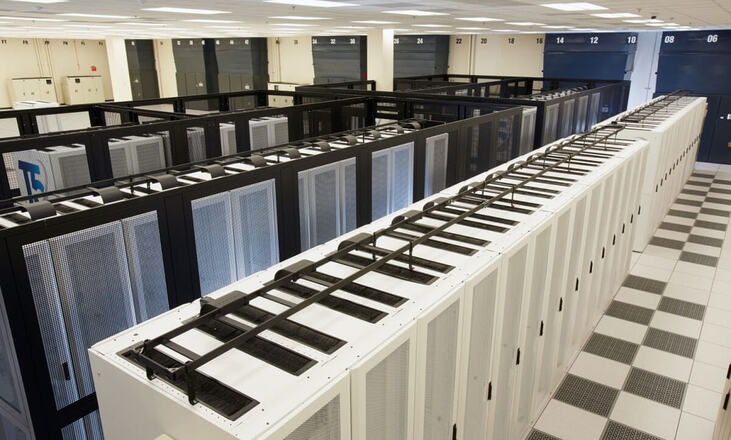As businesses scale and embrace complex digital ecosystems, maintaining server uptime and optimal performance is no longer a luxury but a necessity. To meet this demand, organizations turn to server monitoring tools – sophisticated platforms designed to oversee server health, ensure uninterrupted service delivery, and help IT teams detect issues before they spiral into business disruptions.
Server monitoring software is essentially the vigilant custodian of a company’s digital heartbeat. It continuously observes and evaluates an array of performance metrics including CPU usage, memory consumption, disk I/O activity, and network throughput. By aggregating and analyzing this data in real time, the software enables organizations to proactively maintain system stability, optimize resource use, and avoid service degradation.
Modern server monitoring tools offer a wide array of features that go beyond basic uptime tracking to provide comprehensive infrastructure visibility. Key capabilities include CPU load monitoring, bandwidth monitoring, disk usage tracking, and RAM monitoring, all essential for assessing system resource utilization in real time. Network and router monitoring ensure data flow stability, while switch and firewall monitoring help maintain security and connectivity. Tools also track error rates to detect service degradation early. Customizable dashboards allow IT teams to tailor views for specific roles or priorities, and remote access ensures administrators can monitor and respond to issues from anywhere, supporting modern hybrid work environments.
What makes these server monitoring tools indispensable is their ability to capture not just technical parameters but also environmental conditions that impact server operations – such as ambient temperature and power supply stability. This holistic surveillance allows IT administrators to act on early warning signs, mitigating risks that could lead to catastrophic downtime or data loss.
The operation of server monitoring tools generally begins with data acquisition through agents installed on servers, APIs, or standard protocols like SNMP. This raw data is funneled to a central analytics engine – often cloud-based – for interpretation. Once ingested, the software uses thresholds and baselines derived from historical performance data to detect anomalies. For instance, an unexpected spike in CPU load or a sudden drop in disk performance might trigger an alert, prompting swift intervention.
Alerts are disseminated through various channels – email, SMS, push notifications, or integrations with incident management platforms like PagerDuty or ServiceNow. This multi-channel alerting ensures that critical issues are not only detected but also acted upon promptly, regardless of the time or location of the response team.
Visualization Capabilities, Automated Remediation
One of the defining strengths of server monitoring platforms is their visualization capability. Through interactive dashboards, real-time graphs, and historical performance reports, they transform complex datasets into actionable insights. IT managers can track long-term trends, identify recurring bottlenecks, and make informed decisions regarding capacity planning or infrastructure investment.
Advanced server monitoring solutions go even further by incorporating automated remediation. For example, if memory usage on a server exceeds a set threshold, the system can automatically trigger a service restart or scale up virtual resources to stabilize performance – without requiring human intervention. This form of autonomous IT operations, often aligned with AIOps (Artificial Intelligence for IT Operations), is becoming increasingly crucial in environments with high infrastructure complexity.
The relevance of these tools spans a wide variety of use cases. Large enterprises, managing hundreds or even thousands of servers across distributed locations, rely on monitoring platforms to maintain visibility and control. The sheer scale of their infrastructure makes manual oversight impractical. Server monitoring tools ensure continuity, meet SLA commitments, and allow centralized governance over diverse server fleets.
Managed Service Providers (MSPs), too, are heavy users of such platforms. For these vendors, proactive monitoring is a core value proposition. By catching issues before clients experience them, MSPs not only enhance customer satisfaction but also minimize costly incidents. Server monitoring tools enable them to scale their services across multiple client environments without losing the ability to respond rapidly to performance anomalies.
Similarly, cloud service providers – particularly those offering IaaS or PaaS – depend on robust monitoring systems to ensure the availability and efficiency of their virtualized infrastructure. In environments where containers and microservices proliferate, real-time insights into virtual machines, application performance, and orchestration layers are essential to delivering a seamless user experience.
CI/CD Pipelines, SIEM
DevOps teams integrate server monitoring into CI/CD pipelines to track the impact of new deployments on production environments. Continuous monitoring ensures that code changes don’t introduce regressions or compromise service availability. Real-time feedback loops are critical for rapid iteration and maintaining the integrity of development workflows.
Security teams, meanwhile, harness server monitoring data to detect unauthorized access attempts, monitor traffic anomalies, and identify early indicators of breaches. Integrating monitoring with SIEM (Security Information and Event Management) systems allows organizations to tighten their security posture by correlating server performance with potential threat vectors.
Even academic institutions and research organizations, which often operate high-performance computing clusters, use server monitoring to safeguard the integrity of computational environments. These institutions rely on consistent performance for data-intensive applications and simulations, making real-time observability a non-negotiable requirement.
Choosing a Server Monitoring Tool
Selecting the right server monitoring tool is a nuanced decision, influenced by a range of technical and operational considerations. Compatibility is the starting point – organizations must ensure that the tool supports the operating systems, server types, and applications in use. Seamless integration with existing IT service management (ITSM) platforms, configuration management databases, and alerting tools is also essential for operational coherence.
Scalability is another critical factor. As businesses grow, so does the complexity of their IT environments. The chosen monitoring tool must scale horizontally – handling more nodes, virtual machines, or hybrid cloud components – without performance degradation.
Customization is equally important. Different organizations have different observability needs. A good monitoring platform should allow users to define specific metrics, set bespoke alert thresholds, and tailor reports. The ability to create personalized dashboards enhances usability and ensures relevance for varied stakeholders – from network engineers to C-suite executives.
Speaking of usability, the interface design plays a significant role in adoption. A tool that offers intuitive navigation, clean visualization, and detailed documentation can dramatically reduce the learning curve. For time-strapped IT teams, ease of deployment and quick configuration options can be a major advantage.
Real-time monitoring is not just a desirable feature – it can be mission-critical. The faster an anomaly is detected, the sooner it can be addressed. Tools that offer real-time data feeds and instantaneous alerting provide a clear operational edge. Flexibility in the alerting system – such as escalation policies, integration with communication apps like Slack or Microsoft Teams, and multi-channel support – is also highly valued.
Analytics and historical reporting capabilities may offer a strategic dimension. Beyond tactical troubleshooting, these features allow IT leaders to forecast resource needs, justify budget allocations, and optimize infrastructure. Trend analysis and long-term performance reports can guide decisions about hardware upgrades, load balancing strategies, and cloud migration.
Cost is a factor that cannot be overlooked. Pricing models vary – from open-source tools with limited features to enterprise-grade platforms with advanced functionality and support. Subscription models, pay-per-node pricing, and perpetual licensing each offer different trade-offs. Businesses must evaluate total cost of ownership in the context of feature depth and organizational scale.
Support and community engagement also weigh heavily in the evaluation process. A responsive support team, extensive online knowledge base, and active user community can significantly enhance the value of a monitoring tool. They not only aid in troubleshooting but also accelerate innovation through shared best practices and third-party integrations.
Security features are fundamental, particularly for organizations operating in regulated industries or handling sensitive data. Role-based access controls, encrypted data transmission, audit trails, and compliance with industry standards like SOC 2 or ISO 27001 should be baseline requirements. Additionally, tools should support the identification of security-relevant anomalies in real time.
Lastly, organizations should examine vendor credibility and customer feedback. Independent reviews, case studies, and industry recognitions provide insight into a product’s real-world reliability. Vendors with a history of regular updates, clear product roadmaps, and a reputation for customer satisfaction are typically more reliable partners for long-term infrastructure management.
– story continues below the photo –

Top 8 Server Monitoring Tools
Some of the most popular server monitoring tools are listed below, each having special features, applications, benefits, and drawbacks.
Nagios XI
Type: On-premise, Open-source (Nagios Core) + Paid (Nagios XI) Best for: Enterprises seeking deep customizability and plugin flexibility
Features:
- Monitors network protocols, applications, servers
- Advanced alerting and reporting
- Extensible with thousands of community plugins
- Role-based access control and multi-tenant capabilities
Use Cases:
- Complex hybrid infrastructures
- Organizations with skilled Linux admins
- MSPs managing client environments
Pros:
- Extremely customizable
- Large user community
- Scales well with plugin architecture
Cons:
- Steep learning curve
- Outdated UI compared to newer tools
- Manual configuration can be tedious
Zabbix
Type: Open-source, self-hosted Best for: Enterprises needing scalable, agent-based monitoring
Features:
- Agent and agentless monitoring
- Powerful visualization and SLA tracking
- Auto-discovery and customizable templates
- Strong security and encryption
Use Cases:
- Enterprise IT operations teams
- Telcos and banks needing strict SLA monitoring
- Large-scale datacenters
Pros:
- Free and full-featured
- Strong community support
- Scalable for large environments
Cons:
- Complex initial setup
- Requires manual tuning for large-scale deployments
Datadog
Type: Cloud-based, SaaS Best for: Cloud-native, DevOps, microservices environments
Features:
- Real-time server monitoring and APM
- Cloud integrations (AWS, Azure, GCP)
- AI-based anomaly detection
- Excellent dashboards and log correlation
Use Cases:
- CI/CD pipelines and container environments
- Cloud migration initiatives
- SaaS providers
Pros:
- Easy setup and intuitive UI
- Rich integrations
- Excellent support for Kubernetes and containers
Cons:
- Can become expensive at scale
- May overwhelm with data volume without fine-tuning
SolarWinds Server & Application Monitor (SAM)
Type: Commercial, Windows-focused Best for: Mid-size to large Windows-heavy environments
Features:
- Monitors servers, apps, virtual machines
- Pre-built templates for over 1,200 apps
- Integrated troubleshooting tools
- Support for hybrid IT infrastructure
Use Cases:
- Enterprises using Windows Server environments
- IT departments needing detailed application-level insights
- Organizations needing integrated network and server tools
Pros:
- Powerful application monitoring
- Easy deployment in Microsoft environments
- Unified view of network and server performance
Cons:
- Windows-centric
- Costly licensing model
- Resource-heavy deployment
Prometheus + Grafana
Type: Open-source, modular stack Best for: Developers and DevOps teams using containerized infrastructure
Features:
- Time-series data collection (Prometheus)
- Custom queries with PromQL
- Grafana dashboards for visualization
- Strong Kubernetes support
Use Cases:
- Container orchestration monitoring (Kubernetes, Docker)
- SRE and observability in CI/CD pipelines
- Real-time performance tracking in microservices
Pros:
- Powerful metric engine
- Custom visualizations via Grafana
- Ideal for modern cloud-native stacks
Cons:
- Requires manual setup and tuning
- Limited built-in alerting compared to commercial options
PRTG Network Monitor (by Paessler)
Type: Commercial with a free tier Best for: SMEs and IT generalists needing all-in-one visibility
Features:
- Sensors for CPU, disk, memory, apps
- Customizable alerts and maps
- Auto-discovery of devices
- Mobile app for remote monitoring
Use Cases:
- SMEs with limited IT teams
- Schools, hospitals, retail chains
- Organizations needing centralized monitoring of mixed environments
Pros:
- Easy to set up
- Good out-of-the-box capabilities
- Flexible pricing based on sensor count
Cons:
- Can become expensive as sensor count increases
- Less suited for highly dynamic or cloud-native environments
ManageEngine OpManager
Type: Commercial, with a free edition Best for: Enterprises needing integrated network + server visibility
Features:
- Monitors physical and virtual servers
- Real-time performance graphs and reports
- Layered dashboards for NOC teams
- Workflow automation and root cause analysis
Use Cases:
- IT departments needing unified infrastructure visibility
- Compliance-driven industries (healthcare, finance)
- Multi-location IT operations
Pros:
- Intuitive UI with drag-and-drop dashboards
- Bundled with other ITSM and helpdesk tools
- Affordable for mid-sized enterprises
Cons:
- Customization can be limited without add-ons
- May require training to use advanced features
New Relic One
Type: SaaS, Observability platform Best for: Performance-centric teams in modern, distributed systems
Features:
- Full-stack observability (infra, apps, logs, synthetics)
- AI/ML-powered anomaly detection
- Integration with 500+ tools
- Real-time user monitoring (RUM)
Use Cases:
- DevOps teams monitoring web apps and APIs
- SaaS product teams needing digital experience monitoring
- Enterprises pursuing SRE practices
Pros:
- Clean UI with correlated views
- Unified platform for logs, metrics, traces
- Great developer experience
Cons:
- High cost at enterprise scale
- Steep learning curve for advanced features
Final Thoughts
Server monitoring tools are not just diagnostic instruments – they are strategic assets. As IT infrastructure becomes more dynamic and distributed, the ability to observe, predict, and respond in real time is indispensable. For B2B enterprises aiming to scale efficiently and deliver consistent digital experiences, these tools are foundational to operational excellence and competitive resilience.
Choosing the right server monitoring tool depends heavily on your infrastructure complexity, budget, deployment model (on-prem vs cloud), and internal expertise. For full flexibility and no license cost, open-source tools like Zabbixor Prometheus/Grafana are top picks. For fast deployment and deep integrations, cloud-native solutions like Datadog or New Relic excel. Meanwhile, SolarWinds and PRTG remain popular for traditional enterprise and SMB environments.





